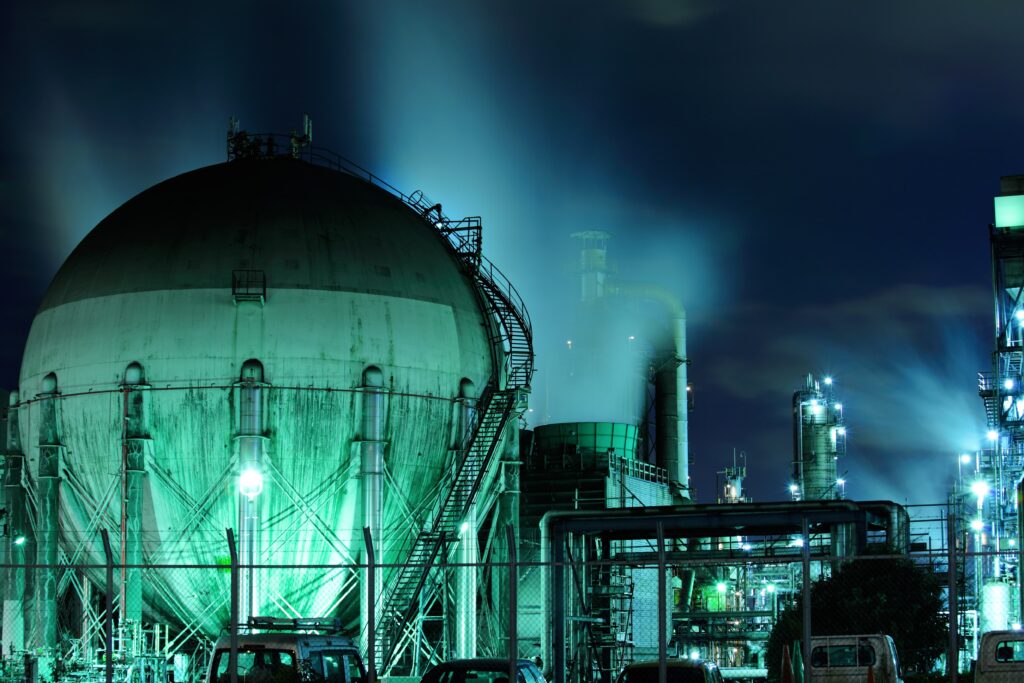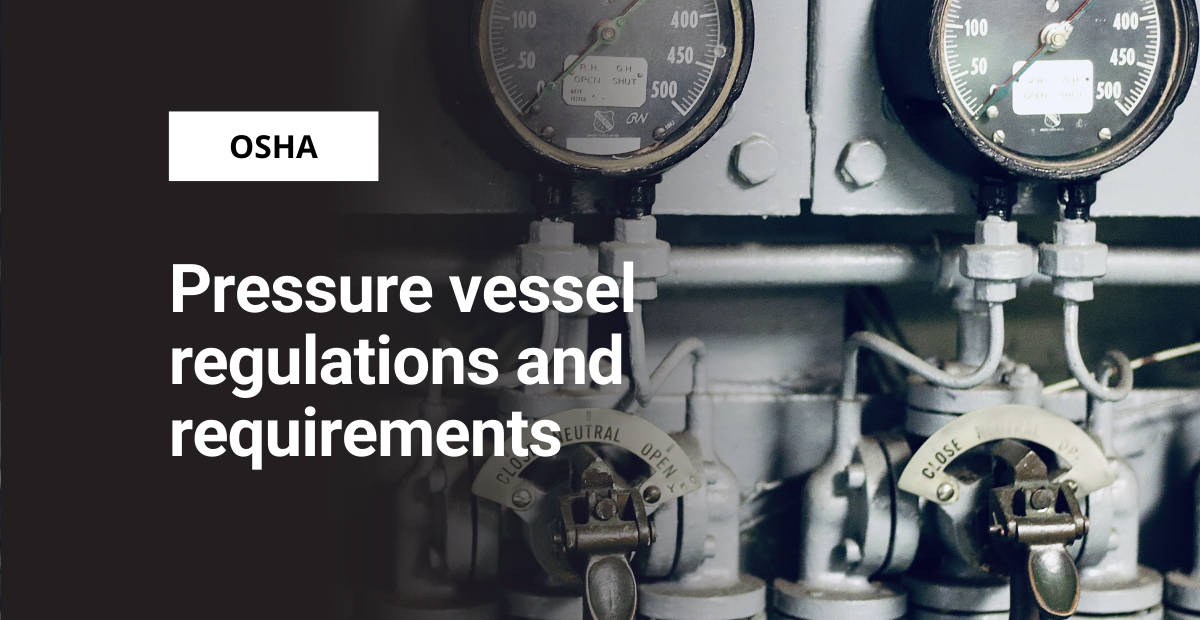Pressure vessels are commonly used in industrial facilities to store gases, vapors, or fluids at pressures greater than 15 PSI. Boilers, tanks, towers, or heat exchangers are all considered to be pressure vessels. They can withstand large amounts of pressure which can create serious hazards for the thousands of people who deal with them on a daily basis.
Industries like oil and gas or chemical and food manufacturing all rely on pressure vessels to fulfill their processes. Because they are subjected to pressures lower or higher than atmospheric conditions, there are strict requirements and regulations surrounding pressure vessels.
Use cases of pressure vessels
There are quite a few different types of pressure vessels that fall under regulatory control. Here are some of the most common ones.
Storage vessels
Storage vessels are the most common type of pressure vessels. They are generally made from stainless steel, titanium, galvanized steel, or fiberglass and are used to store various substances or solutions. The storage conditions can differ based on internal or external pressure, temperature, and state of the material.
Heat exchangers
Heat exchangers provide heat transfer between two fluids. The distinguishing feature of the heat exchanger is that it carries out the heat transfer between these two fluids in a liquid or gaseous state by preventing the mixing of materials.
Plates or other heat transfer surfaces generally used in heat exchangers, both separate the fluids from each other and provide the transfer of heat from one fluid to another. This heat exchange can be heating, cooling, or bidirectional.
Process vessels
Process vessels are usually part of a bigger process. Their intended use defines which material or control the vessel will contain. The container or tank connects to other parts of the equipment or process generally for separation, purification, blending or changing the materials state.
Pressure vessel hazards and awareness
Pressure vessel failures can lead to catastrophic incidents. There are several factors that may lead to the failure of the equipment:
- Operating above allowable working pressures
- Improper setting of pressure relief devices
- Poor maintenance
- Improper installation
- Fatigue from repeated pressurization
- Corrosion, erosion, cracking
Any one of these factors can result in the sudden release of high pressure which could create blast effects or fire explosions. The impact that pressure vessels can create does not come just from explosions.
Workers dealing with such equipment could also face chemical burns, suffocation or poisoning from exposure to the hazardous material stored in the container, or fragmentation damage from flying debris.

Regulations regarding pressure vessel safety
Depending on your industry and the types of pressure vessels you use, you may fall under several regulations. Here are two of the big ones to consider for compliance.
OSHA pressure vessel regulations
Under OSHA, the standards for pressure vessel safety exist in several different documents for general industry, maritime, and construction. For the General Industry, these standards cover Hazardous Materials, Compressed Gas and Air Equipment, Machinery and Machine Guarding, and Special Industries.
The Hazardous Materials standard requires employers to
- Keep compressed gas cylinders in a visibly safe condition.
- Make sure all storage and handling must be done in accordance with Compressed Gas Association Pamphlets.
- Install and maintain pressure relief devices for all compressed gas cylinders.
Also, these rules apply to the handling of different hazardous materials. Examples of these materials include acetylene, hydrogen, oxygen, nitrous oxide, flammable liquids, and others.
To ensure OSHA compliance, pressure vessels must undergo testing to ensure compliance with ASME Boiler and Pressure Vessel Code requirements. Additionally, some vessels may need to comply with DOT specifications and regulations.
ASME Boilers and Pressure Vessel Code
ASME’s Boilers and Pressure Vessel Code was issued in 1914 after several tragic explosions occurred in a shoe factory in Massachusetts during the early 1900s. It is an international code aimed at enhancing public safety through incorporating technology and modernized solutions into industrial processes and equipment.
So, the code covers detailed guidelines on how to install, operate, maintain, and examine power boilers, heat exchangers, pressure vessels, transport tanks, and more. The ASME BPVC Certification confirms that equipment meets the highest standards of safety and quality.
There are many other standards and best practices to consider for different industries and locations such as the API (American Petroleum Institute) standards, PD5500, British, European, or other international codes.



